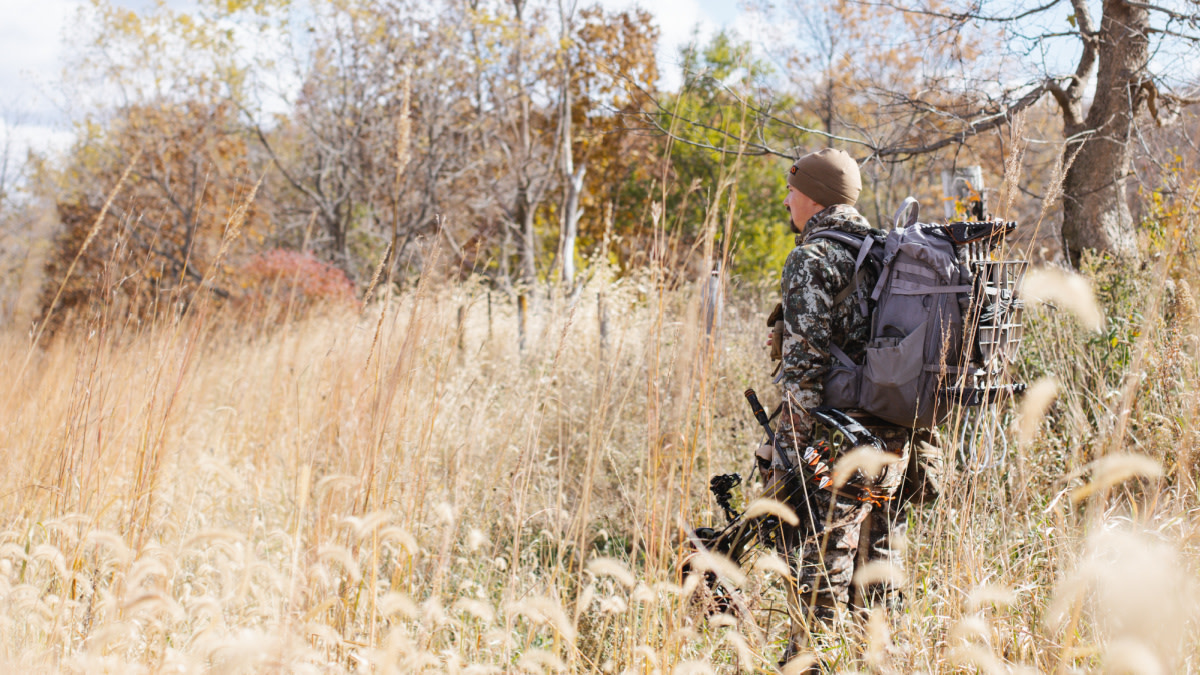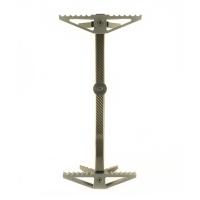
To be consistently successful on pressured public land, hunters must go where the deer are and other hunters aren’t. This flexible style of mobile hunting might mean moving to a new spot every sit.
But if you’re carrying in a climber or hang-on each time, it can become a real grind—especially when logging some serious miles to your next spot. You’ll get to your ambush site sweaty, sore, and exhausted before the hunt even begins.
Trimming a few ounces here and there from your tree stand setup could lighten the load and have a big impact on your overall enjoyment. These simple swaps can make lugging in, setting up, and tearing down much easier for mobile hunters.
Swap Your Seat Most tree stands come standard with a bulky, uncomfortable cushion that’s noisy and adds unnecessary weight. These seats often freeze in frigid weather or become chew toys for squirrels when left out.
Removing the factory seat and replacing it with a lighter alternative can deduct some weight and leave you with a quieter, more comfortable setup. You can easily tie on your own mesh, webbing, or netting to create a versatile seat or purchase a hammock-style seat.
If you DIY it, you can make this cheap fix for a few bucks. Just make sure the materials you choose are rated for the weight you’ll be putting on them and use as many tie-on points as possible to ensure your seat is secure.
Attach with AmSteel If you haul a hang-on and climbing sticks into the woods every time, you’re likely messing with heavy straps with noisy hardware. Try swapping out these cumbersome materials with easy-to-use AmSteel.
Compact and lightweight, AmSteel boasts the best strength-to-weight ratio with minimal stretch and maximum resistance to wear. Braided Dyneema fibers make AmSteel rope incredibly durable and capable of holding as much as wire rope at about 15% of the weight.
Some manufacturers sell treestand-specific AmSteel designs to replace straps, bungees, bow hangers, and other components. It’s also available by the foot so you can create your own custom AmSteel setup. Be sure to follow instructions for correctly splicing AmSteel so the fibers maintain their integrity.
Add Aiders Getting 20 feet off the ground in a hang-on typically requires four or more climbing sticks. At a couple pounds per stick, that weight can add up quickly.
But hunters can climb higher with fewer sticks by adding some form of packable aider device. Constructed of webbing, rope, or AmSteel, climbing aiders can extend the reach of each climbing stick by a step or two. They can remain fixed to one climbing stick, or you can move them up with you as you ascend the tree. And they weigh a fraction of most climbing sticks.
Quickly growing in popularity among bowhunters, climbing aiders are available from several manufacturers but are also easy to make at home with just a few supplies.
Switch to a Saddle Bowhunting from a tree saddle has become the trendy tactic in the last couple years, but these lightweight systems have been around for decades. Utilizing a series of ropes, climbing tools, a saddle, and a compact platform or ring of tree steps, this style of elevated hunting is ideal for hoofing it on public land.
While the average climber or hang-on setup could easily top 20 pounds, most saddles weigh in at a featherlight 1 to 2 pounds. Add in all the necessary accessories and you could still be looking at a sub-10-pound setup.
Besides significantly cutting down on weight with the right setup, tree saddles also reduce bulk, provide more shot angle opportunity, and can be much quieter than their full-metal counterparts. If you’re sick of toting around a heavy treestand, consider switching to a saddle.
Stay Safe Shaving some weight off your mobile hunting setup could spare you some pain and energy, but don’t sacrifice safety to save a few ounces. Be sure your tinkering doesn't change the structural stability of your stand and keep in mind that modifications could void any warranty.
Never overload materials above their weight ratings. And just as you monitor the condition of your stand and steps, regularly check any modifications for signs of wear.






